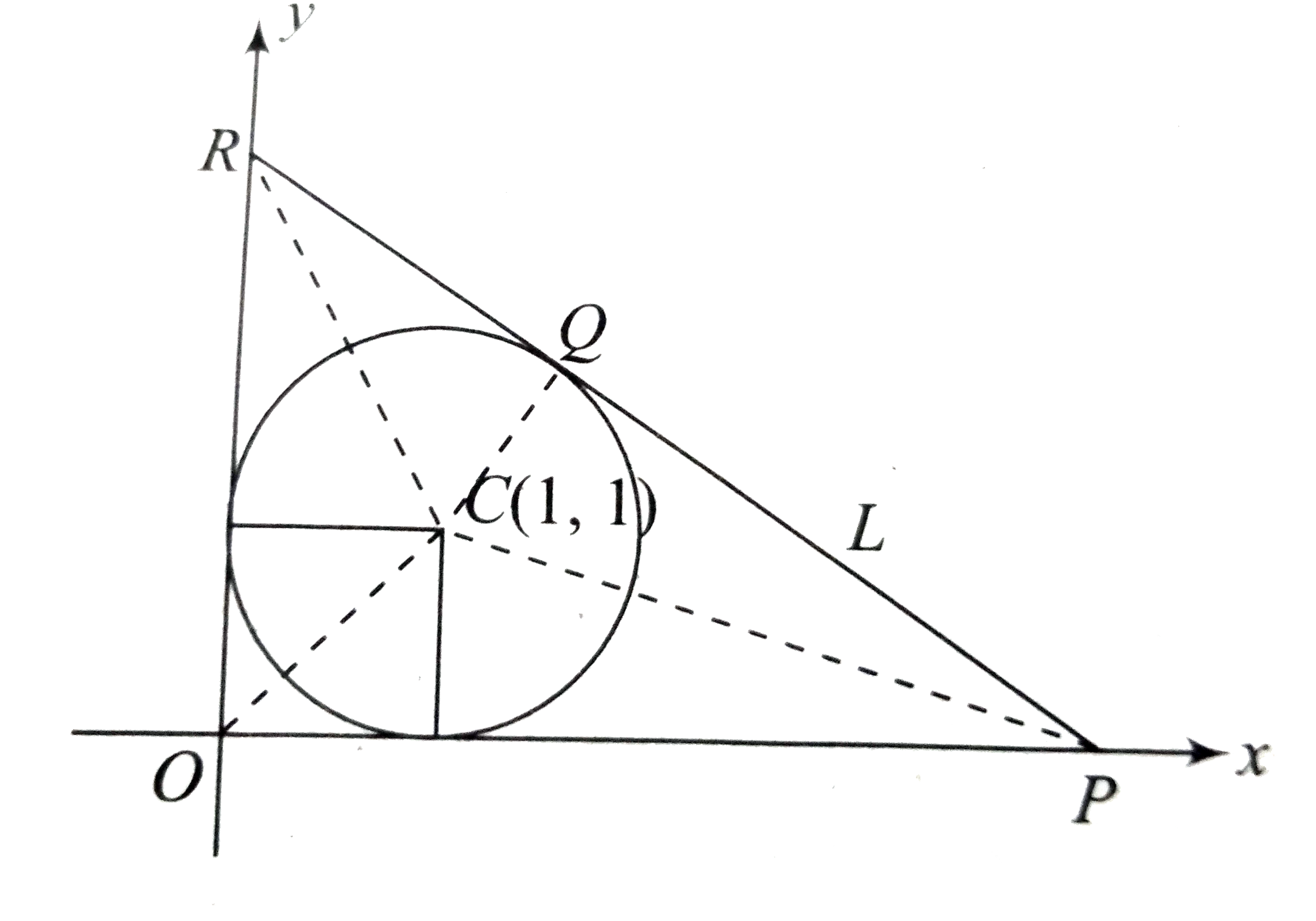Let four points z1,z2,z3,z4 be in complex plane such that |z2|=1, |z1|≤1 and |z3|≤1. If z3=z2(z1−z4)¯z1z4−1, then |z4| can be (a) 2 (b) 25 (c) 13 (d) 52
2
25
13
52
The correct Answer is:B, C
To solve the problem, we will analyze the given equation and the conditions step by step.
Given:
1. |z2|=1
2. |z1|≤1
3. |z3|≤1
4. z3=z2(z1−z4)¯¯¯¯¯z1z4−1
Step 1: Taking the modulus of both sides
We start by taking the modulus of both sides of the equation for z3:
|z3|=∣∣∣z2(z1−z4)¯¯¯¯¯z1z4−1∣∣∣
Step 2: Applying properties of modulus
Using the properties of modulus, we can rewrite this as:
|z3|=|z2|⋅|z1−z4||¯¯¯¯¯z1z4−1|
Step 3: Substituting known values
Since |z2|=1, we have:
|z3|=|z1−z4||¯¯¯¯¯z1z4−1|
Step 4: Using the condition for z3
Given that |z3|≤1, we can write:
|z1−z4||¯¯¯¯¯z1z4−1|≤1
Step 5: Rearranging the inequality
This implies:
|z1−z4|≤|¯¯¯¯¯z1z4−1|
Step 6: Squaring both sides
To eliminate the modulus, we square both sides:
|z1−z4|2≤|¯¯¯¯¯z1z4−1|2
Step 7: Expanding both sides
Expanding both sides gives:
|z1|2+|z4|2−2Re(z1¯¯¯¯¯z4)≤|z1|2|z4|2−2Re(¯¯¯¯¯z1z4)+1
Step 8: Simplifying the inequality
Rearranging terms leads to:
|z4|2−2Re(z1¯¯¯¯¯z4)+2Re(¯¯¯¯¯z1z4)−1≤0
Step 9: Analyzing the conditions
Since |z1|≤1, we can analyze the implications for |z4|. The inequality suggests that |z4| must be constrained.
Step 10: Conclusion
From the analysis, we find that |z4| must be less than or equal to 1 to satisfy the conditions given. The possible values for |z4| from the options provided are:
- (a) 2
- (b) 25
- (c) 13
- (d) 52
Among these, the only feasible value that satisfies |z4|≤1 is 25 and 13.
Thus, the answer is:
(b) 25 or (c) 13.
1. |z2|=1
2. |z1|≤1
3. |z3|≤1
4. z3=z2(z1−z4)¯¯¯¯¯z1z4−1
We start by taking the modulus of both sides of the equation for z3:
|z3|=∣∣∣z2(z1−z4)¯¯¯¯¯z1z4−1∣∣∣
Using the properties of modulus, we can rewrite this as:
|z3|=|z2|⋅|z1−z4||¯¯¯¯¯z1z4−1|
Since |z2|=1, we have:
|z3|=|z1−z4||¯¯¯¯¯z1z4−1|
Given that |z3|≤1, we can write:
|z1−z4||¯¯¯¯¯z1z4−1|≤1
This implies:
|z1−z4|≤|¯¯¯¯¯z1z4−1|
To eliminate the modulus, we square both sides:
|z1−z4|2≤|¯¯¯¯¯z1z4−1|2
Expanding both sides gives:
|z1|2+|z4|2−2Re(z1¯¯¯¯¯z4)≤|z1|2|z4|2−2Re(¯¯¯¯¯z1z4)+1
Rearranging terms leads to:
|z4|2−2Re(z1¯¯¯¯¯z4)+2Re(¯¯¯¯¯z1z4)−1≤0
Since |z1|≤1, we can analyze the implications for |z4|. The inequality suggests that |z4| must be constrained.
From the analysis, we find that |z4| must be less than or equal to 1 to satisfy the conditions given. The possible values for |z4| from the options provided are:
- (a) 2
- (b) 25
- (c) 13
- (d) 52
(b) 25 or (c) 13.
Topper's Solved these Questions
- COMPLEX NUMBERSBook:CENGAGE ENGLISHChapter:COMPLEX NUMBERSExercise:LINKED COMPREHENSION TYPE
Explore 36 Videos
- COMPLEX NUMBERSBook:CENGAGE ENGLISHChapter:COMPLEX NUMBERSExercise:NUMERICAL VALUE TYPES
Explore 33 Videos
- COMPLEX NUMBERSBook:CENGAGE ENGLISHChapter:COMPLEX NUMBERSExercise:single correct Answer type
Explore 92 Videos
- CIRCLESBook:CENGAGE ENGLISHChapter:CIRCLESExercise:Comprehension Type
Explore 8 Videos
- CONIC SECTIONSBook:CENGAGE ENGLISHChapter:CONIC SECTIONSExercise:All Questions
Explore 101 Videos
Similar Questions
Consider the complex number z=1−isinθ1+icosθ.
The value of θ for which z is purely real are
View SolutionIf x=a+bi is a complex number such that x2=3+4iandx3=2+1i,wherei=√−1,then(a+b) equal to ______.
View SolutionIf a⟨0,b⟩0,then√a√b is equal to −√|a|b b. √|a|bi c. √|a|b d. none of these
View Solution
In the diagram as shown, a circle is drawn with centre C(1,1) and radius 1 and a line L. The line L is tangent to the circle at Q. Further L meets the y-axis at R and the x-axis at P in such a way that the angle OPQ equals θ where 0<θ<π2.
Area of triangle OPR when θ=π/4 is
View SolutionGiven that A(1,1) and B(2,−3) are two points and D is a point on AB produced such that AD=3AB. Find the coordinates of D.
View SolutionIf z1,z2,z3,z4 are complex numbers in an Argand plane satisfying z1+z3=z2+z4. A compex number 'z' lies on the line joining z1 and z4 such that Arg(z−z2z1−z2)=Arg(z3−z2z−z2). It is given that |z−z4|=5,|z−z2|=|z−z3|=6 then
View SolutionLet z1,z2,z3,z4 are distinct complex numbers satisfying |z|=1 and 4z3=3(z1+z2), then |z1−z2| is equal to
View SolutionLet four points z1,z2,z3,z4 be in complex plane such that |z2|=1, |z1|≤1 and |z3|≤1. If z3=z2(z1−z4)¯z1z4−1, then |z4| can be
View SolutionIn complex plane z1,z2 and z3 be three collinear complex numbers, then the value of ∣∣ ∣∣z1¯z11z2¯z21z3¯z31∣∣ ∣∣ is -
View Solutionif z1,z2,z3,…..zn are complex numbers such that |z1|=|z2|=….=|zn|=∣∣∣1z1+1z2+1z3+….+1zn∣∣∣=1
Then show that |z1+z2+z3+……+zn|=1
View SolutionShow that if z1z2+z3z4=0andz1+z2=0 ,then the complex numbers z1,z2,z3,z4 are concyclic.
View SolutionThe point z1,z2,z3,z4 in the complex plane are the vertices of a parallogram taken in order, if and only if.
(1)z1+z4=z2+z3 (2) z1+z3=z2+z4
(3) z1+z2=z3+z4 (4) z1+z3≠z2+z4
View SolutionIf z1,z2,andz3 are three complex numbers such that |z1|=1, |z2|=2, |z3|=3and|z1+z2+z3|=1, show that |9z1z2+4z1z3+z2z3|=6.
View SolutionLet z1,z2 and z3 be complex numbers such that |z1|=|z2|=|z3|=1 then prove that |z1+z2+z3|=|z1z2+z2z3+z3z1|
View SolutionIf |z1|=|z2|=|z3|=|z4|, then the points representing z1,z2,z3,z4 are :
View Solution
